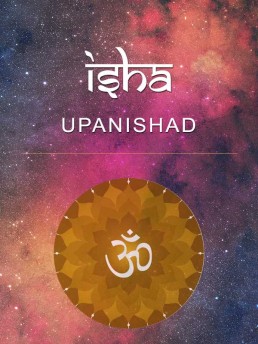इति शुश्रुम धीराणां ये नस्तद्विचचक्षिरे ॥ १३ ॥
iti śuśruma dhīrāṇāṃ ye nastadvicacakṣire || 13 ||
Isha Upanishad Home
Isha – Sri Shankara’s Introduction
Isha – Invocation
Isha – 1-īśāvāsyamidaṃ sarvaṃ
Isha – 2-kurvanneveha karmāṇi
Isha – 3-asuryā nāma te lokā
Isha – 4-anejadekaṃ manaso
Isha – 5-tadejati tannaijati
Isha – 6-yastu sarvāṇi
Isha – 7-yasminsarvāṇi bhūtāny
Isha – 8-sa paryagāc chukram
Isha – 9-andhantamaḥ praviśanti
Isha – 10-anyad evāhur vidyayā
Isha – 11-vidyāṁ cāvidyāṁ ca
Isha – 12-andhaṁ tamaḥ praviśanti
Isha – 13-anyad evahūḥ
Isha – 14-sambhūtiṁ ca vināśaṁ
Isha – 15-hiraṇmayena pātreṇa
Isha – 16-pūṣann ekarṣe yama
Isha – 17-vāyur anilam amṛtam
Isha – 18-agne naya supathā

Commentary by Sri Adi Sankaracharya – Translated in English
Now, the distinction in the fruits of the two individual worships is jointed out, in view to their combination. They have said that from the worship of Sambhutih or Karya Brahman or Hiranyagarbha results the attainment of Anima and other Siddhis. Similarly, they have said that according to Paurairikas the absorption into Prakriti results from the worship of the unborn Prakriti. We have heard it thus stated by wise preceptors who taught us the fruits of the worship of Prakriti and Hiranyagarbha individually.
Commentary by Swami Sivananda
He who worships Sambhuti or Hiranyagarbha (Karya Brahman) obtains Anima (the state or becoming like an atom) and other Siddhis. He who worships the unborn Prakriti gets absorption (Laya) into the Prakriti. He becomes a Prakriti-laya (vide Patanjali Yoga Sutras, Chap. I, Samadhipada). Thus we have heard from the wise preceptors who taught us the fruits of the worship of Hiranyagarbha and Prakriti separately.
Ishavasya Upanishad – Verse 13 – Isha – 13-anyad evahūḥ – In Sanskrit with English Transliteration, Meaning and Commentary by Adi Shankaracharya (Sankara Bhashya) and Swami Sivananda – Ishavasya-13
